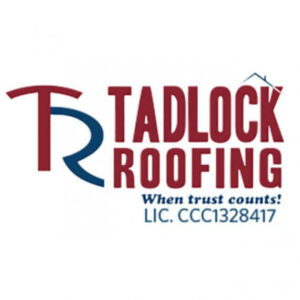Will my premiums go up if I file a claim?
No. It is unlawful for homeowners insurance companies to terminate your policy or raise your rates based on an individual claim for weather-related events. This means that, unlike auto insurance, you will not be penalized for filing a claim. That said, an increase in rates is based on where your home is situated geographically. If you live in a disaster-prone area or one that has recently been hit hard by a storm, your rates will likely increase (even if you don’t file a claim).
My insurance company didn’t give me enough to cover the roof. How do I know if they measured the roof correctly?
The best way to determine if your roof is measured correctly is to get a professional inspection. Tadlock Roofing’s expert consultants can come out to provide you with a free estimate for any repair project as well as provide an accurate measurement of your roof to compare against your insurance settlement.
My inspection from the roofing contractor uncovered more damage than the insurance adjuster noted.
Sometimes, for one reason or another, damage to your roof can go unnoticed by the insurance adjuster. Fortunately, this can be resolved rather simply by providing the insurance company with proper evidence of the full extent of the damage. Photos and other documentation provided by your roofing contractor will then be sent to the insurance company for further review. Pending approval, the insurance company will supplement the additional cost required to repair the damage not initially uncovered by the adjuster.
What is the difference between ACV and RCV on my insurance settlement?
RCV is the Replacement Cost Value of the roof and represents what it would cost if it were to be installed brand-new today. ACV is the Actual Cost Value, representing the value of the RCV minus the depreciation of the roof. For instance, if you have a shingle roof that’s 15 years old, depreciation may be factored at 50% and your ACV would represent around half of the RCV of the roof.
How is depreciation calculated?
Age is the most important factor under consideration when an adjuster is calculating the amount your roof has depreciated. The expected lifetime of your roof will be used to prorate your ACV based on how old the roof is. Using the previous example, if your roof’s life expectancy is 30 years, it will have depreciation of 50% (or half) 15 years after initial installation.
Regular wear and tear will likely also be included as depreciation (and not covered under your policy). Along with wear and tear, poor upkeep and maintenance of your roof can also affect the actual dollar amount given to you by your insurance company for replacement costs. (see: The Importance of Preventative Maintenance)
Note: depending on your policy, depreciation may actually be covered by your insurance (but the only way to find out for sure is to contact your insurance provider for details).
How can I tell if there is damage to my roof?
Missing, cracked or dented shingles are the most obvious sign of a roof damaged by a storm. Granular loss can also be an indication of a storm-damaged roof. While some level of ongoing granular loss is expected in shingle roof systems, large clusters of granules in your gutter or at the end of a downspout are caused by high winds and flying debris and should be assessed (see: Granular Loss and What it Means for Your Roof). If your roof is showing any signs of damage as a result of a storm, contact Tadlock Roofing for a free assessment from one of our trusted roofing experts.










